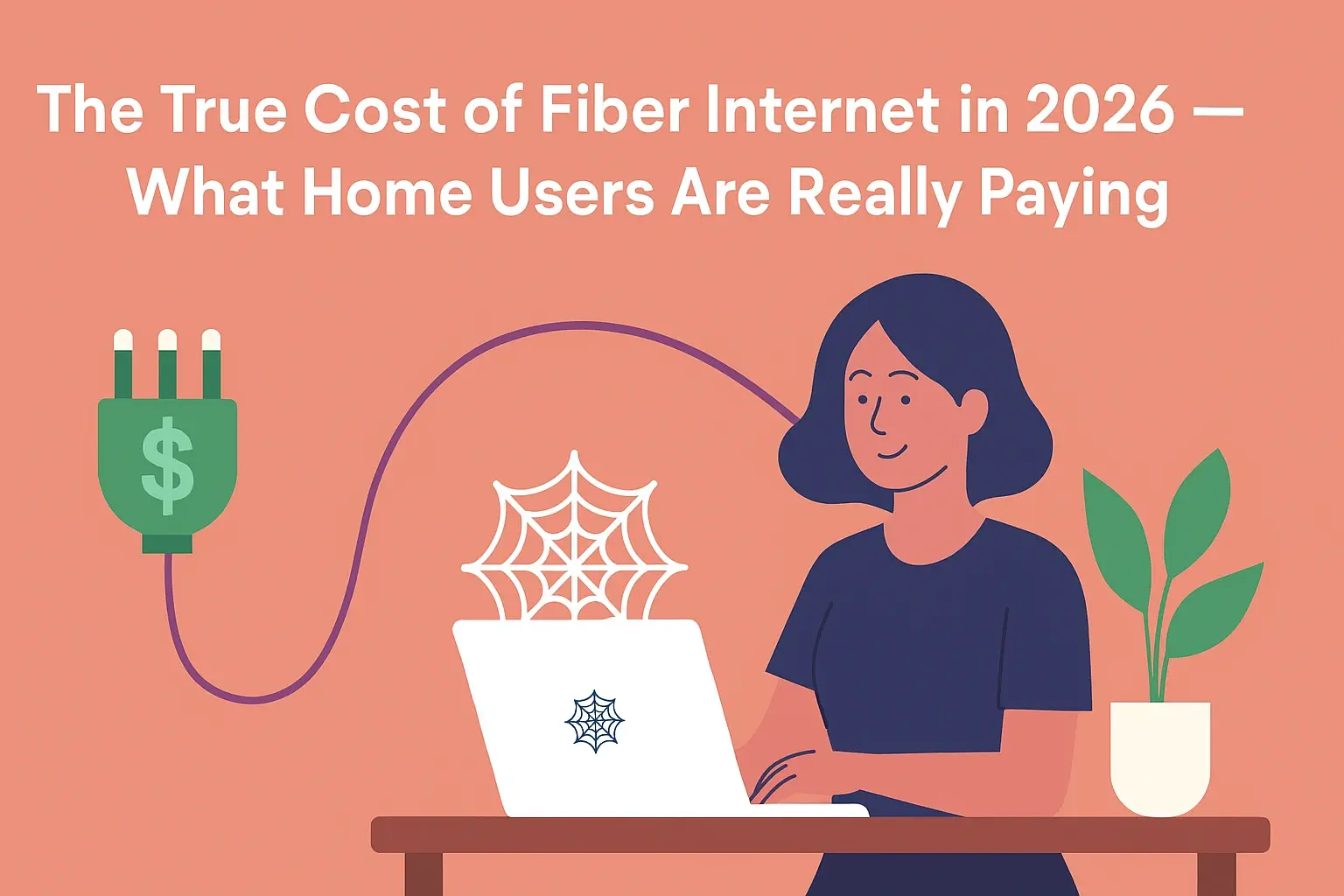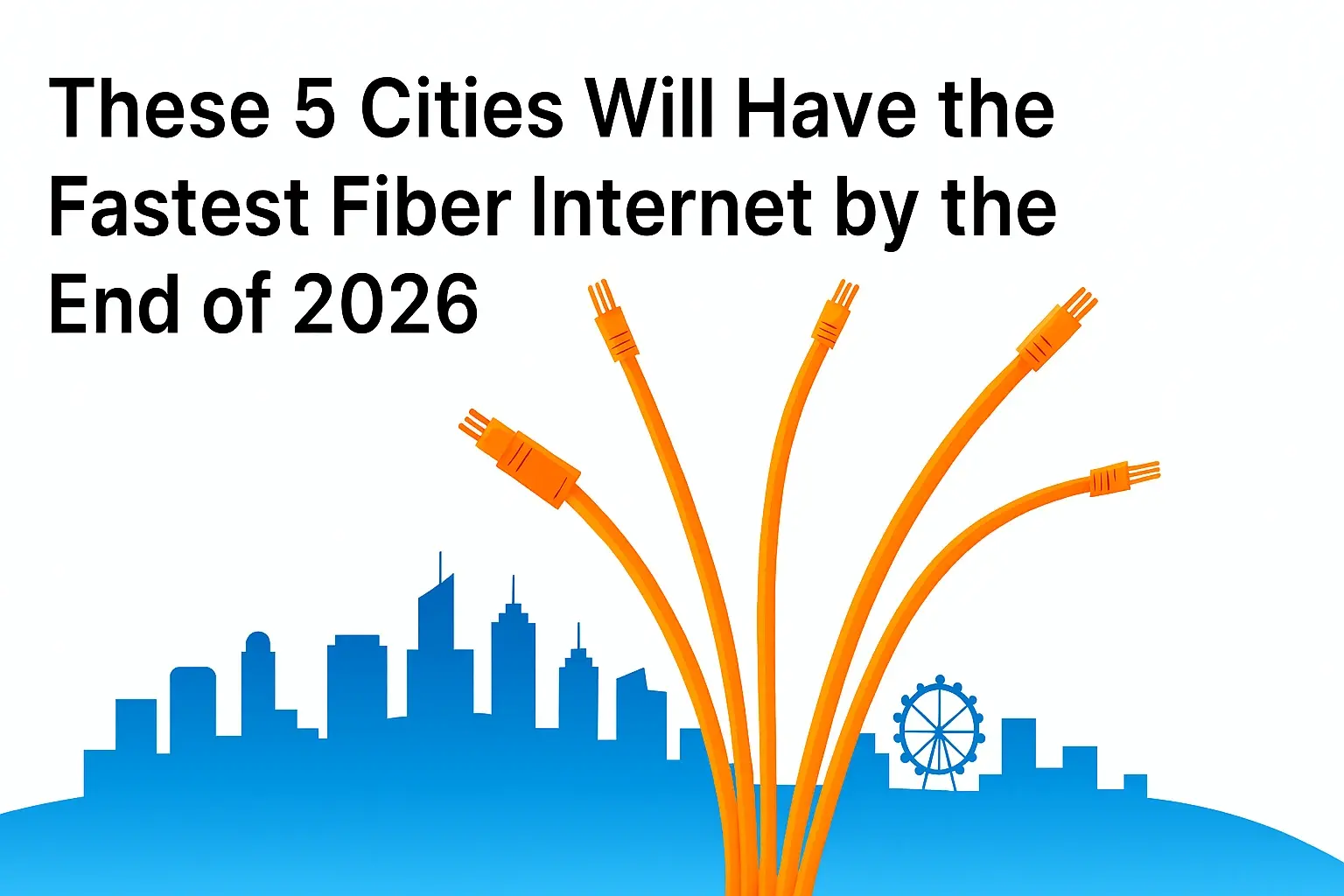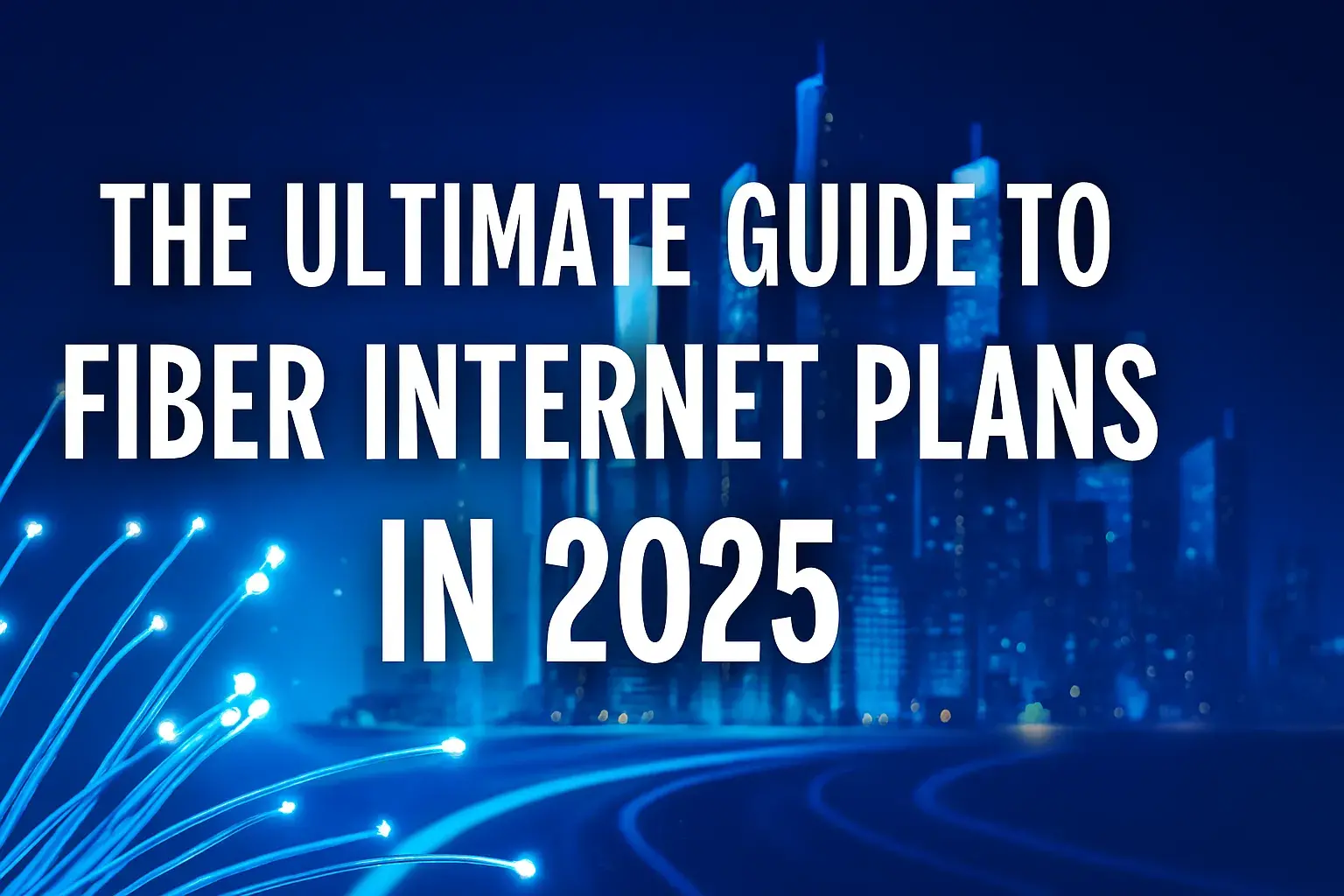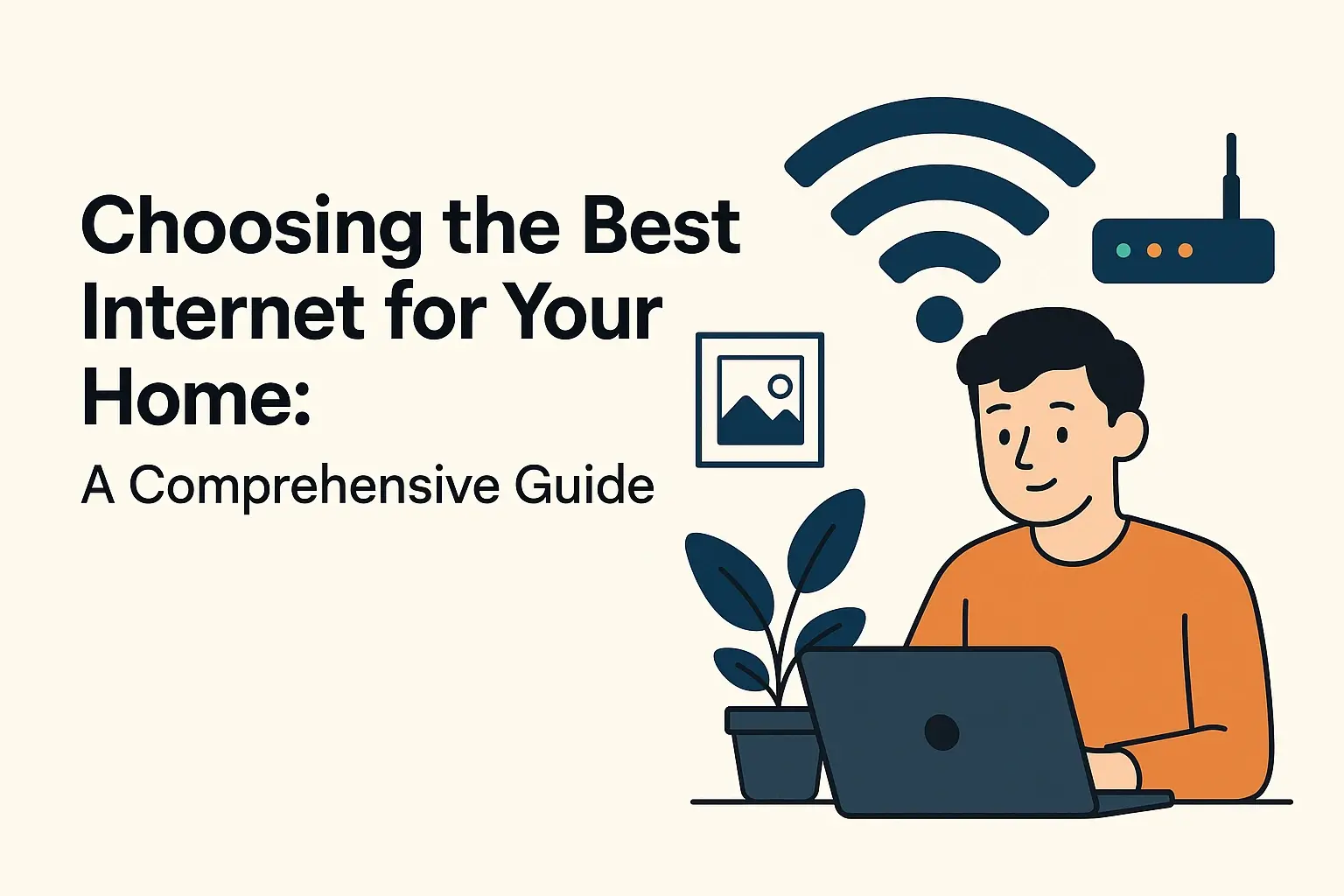Exploring Fiber Internet: Benefits, Speeds, and More

Discover the transformative power of fiber internet, a technology revolutionizing online experiences. This guide explores its unparalleled benefits, blazing-fast speeds, and why it's the superior choice for modern connectivity in 2025, promising a future of seamless streaming, gaming, and productivity.
What is Fiber Internet?
Fiber internet, also known as fiber optic internet, represents the pinnacle of broadband technology available to consumers and businesses today. Unlike traditional internet services that rely on copper wires to transmit data, fiber optic internet utilizes thin strands of glass or plastic fibers to carry information as pulses of light. This fundamental difference in transmission medium is the key to its superior performance, offering speeds and reliability that were once unimaginable. As of 2025, fiber optic networks are rapidly expanding, making this cutting-edge technology accessible to a growing portion of the population and setting a new standard for online connectivity.
How Fiber Internet Works
The magic behind fiber internet lies in its ability to transmit data using light signals. Here's a breakdown of the process:
- Data Transmission: Your internet service provider (ISP) converts digital data from your devices into light pulses.
- Fiber Optic Cables: These light pulses are then sent through a network of ultra-thin glass or plastic fibers. These fibers are incredibly pure and designed to reflect light internally, guiding it over long distances with minimal signal loss.
- Light Pulses to Data: At the receiving end, specialized equipment converts the light pulses back into digital data that your devices can understand.
- Two-Way Communication: This process happens in both directions, allowing for seamless upload and download activities.
The sheer speed of light, combined with the efficiency of optical transmission, allows fiber internet to achieve speeds far exceeding those of copper-based technologies. This makes it ideal for bandwidth-intensive activities such as 4K streaming, online gaming, large file transfers, and supporting multiple connected devices simultaneously.
The Unmatched Benefits of Fiber Internet
The advantages of fiber optic internet are substantial and address many of the pain points associated with older internet technologies. In 2025, these benefits are more pronounced than ever, making fiber the preferred choice for discerning users.
Unparalleled Speed
This is arguably the most significant advantage of fiber internet. The speed at which light travels through fiber optic cables is immense. This translates to download and upload speeds that can reach gigabits per second (Gbps), often hundreds or even thousands of times faster than traditional DSL or cable internet. For households with multiple users and devices, this means no more buffering during streaming, instant downloads, and a fluid online experience for everyone. For businesses, it means increased productivity, faster data processing, and the ability to leverage cloud-based applications without lag.
Superior Reliability
Fiber optic cables are less susceptible to environmental interference compared to copper wires. They are not affected by electromagnetic interference (EMI) from appliances, power lines, or even weather conditions like lightning. This inherent resilience means a more stable and consistent internet connection, with fewer outages and dropped connections. In 2025, with the increasing reliance on stable internet for remote work, online education, and telehealth, this reliability is paramount.
Lower Latency
Latency, often referred to as "lag," is the time it takes for data to travel from your device to a server and back. Fiber optic cables transmit data more directly and efficiently, resulting in significantly lower latency. This is crucial for real-time applications like online gaming, video conferencing, and live streaming. Low latency ensures a responsive experience, where actions are registered almost instantaneously, leading to a more enjoyable and productive online interaction.
Enhanced Security
Fiber optic cables are inherently more secure than copper cables. Tapping into a fiber optic cable without detection is extremely difficult. Unlike copper, which can be tapped electromagnetically, fiber requires a physical breach, which is easily detectable by monitoring the light signal. This makes fiber internet a more secure option for sensitive data transmission, a growing concern in the digital landscape of 2025.
Future-Proofing Your Home
As technology continues to advance, the demand for bandwidth will only increase. 8K streaming, virtual reality (VR), augmented reality (AR), and increasingly sophisticated smart home devices all require substantial internet speeds. Fiber optic internet, with its massive capacity, is built to handle these future demands. Investing in fiber now means your internet connection will remain fast and capable for years to come, without needing frequent upgrades.
Environmental Advantages
Fiber optic cables require less energy to transmit data over long distances compared to copper. They are also more durable and have a longer lifespan, reducing the need for frequent replacements and the associated environmental impact. Furthermore, the manufacturing process for fiber optic cables is generally more environmentally friendly than that of copper cables. This makes fiber a more sustainable choice for internet connectivity in 2025 and beyond.
Fiber Internet Speeds Explained
Understanding internet speeds can be confusing, but with fiber, the numbers speak for themselves. Here’s a breakdown of what to expect in 2025.
Understanding Bandwidth
Bandwidth refers to the maximum amount of data that can be transmitted over an internet connection in a given amount of time. It's often measured in megabits per second (Mbps) or gigabits per second (Gbps). Think of it like a highway: a wider highway (higher bandwidth) can accommodate more cars (data) simultaneously, leading to faster overall traffic flow.
Download vs. Upload Speeds
Most internet plans specify both download and upload speeds:
- Download Speed: This is the speed at which data is transferred from the internet to your device. It's what you experience when streaming videos, browsing websites, and downloading files.
- Upload Speed: This is the speed at which data is transferred from your device to the internet. It's crucial for activities like uploading photos and videos, video conferencing, and online gaming.
Fiber internet often provides symmetrical speeds, meaning download and upload speeds are the same, which is a significant advantage over many cable plans that have much slower upload speeds.
Typical Fiber Speeds in 2025
The landscape of fiber internet speeds continues to evolve. In 2025, consumers can expect to find a range of plans:
- Entry-level Fiber: Often starting at 100 Mbps or 300 Mbps symmetrical. These are excellent for moderate internet use, including streaming HD content and browsing.
- Mid-tier Fiber: Typically ranging from 500 Mbps to 1 Gbps (1000 Mbps) symmetrical. This tier is ideal for households with multiple users, heavy streaming (4K), online gaming, and significant cloud usage.
- High-end Fiber: Plans offering 2 Gbps, 5 Gbps, or even 10 Gbps symmetrical speeds are becoming increasingly available, especially in metropolitan areas. These are for power users, businesses, and those who want the absolute fastest connection possible for demanding applications.
According to industry reports in early 2025, the average advertised fiber speed in major urban centers has surpassed 1 Gbps, with a significant portion of new deployments offering multi-gigabit options.
How Much Speed Do You Really Need?
The amount of speed you need depends on your household's internet usage habits. Here's a general guideline for 2025:
- 1-2 users, light browsing/email: 50-100 Mbps might suffice, but fiber's reliability makes even these speeds a great option.
- 2-4 users, HD streaming, some gaming: 300-500 Mbps symmetrical is a good sweet spot.
- 4+ users, 4K streaming, heavy gaming, multiple devices: 1 Gbps or higher symmetrical speeds are recommended.
- Remote work, large file uploads/downloads, smart home enthusiasts: 1 Gbps and above will provide the best experience.
It's always better to have slightly more speed than you need to ensure a smooth experience during peak usage times. Fiber's symmetrical speeds mean that uploading large files for work or sharing content will be just as fast as downloading.
Fiber Internet vs. Other Technologies
To truly appreciate fiber, it's essential to compare it with other common internet technologies available in 2025.
Fiber vs. Cable Internet
Cable internet uses coaxial cables, similar to those used for cable TV, to transmit data. While significantly faster than DSL, it has limitations compared to fiber.
| Feature | Fiber Internet | Cable Internet |
|---|---|---|
| Technology | Glass or plastic optical fibers | Coaxial copper cables |
| Speed (Typical Max Download) | 1 Gbps to 10 Gbps+ | Up to 1 Gbps (often lower in practice) |
| Speed (Typical Max Upload) | 1 Gbps to 10 Gbps+ (Symmetrical) | 10 Mbps to 50 Mbps (Asymmetrical) |
| Reliability | Very High (less susceptible to interference) | Moderate (can be affected by network congestion and interference) |
| Latency | Very Low | Low to Moderate |
| Bandwidth Capacity | Extremely High | High, but shared |
| Cost | Often higher upfront, competitive for speeds | Generally more affordable for lower speeds |
Key Takeaway: Fiber offers superior symmetrical speeds, reliability, and lower latency, making it the clear winner for demanding users. Cable is a viable option for moderate use if fiber isn't available.
Fiber vs. DSL Internet
Digital Subscriber Line (DSL) internet uses existing copper telephone lines to transmit data. It's one of the oldest broadband technologies and is generally the slowest.
| Feature | Fiber Internet | DSL Internet |
|---|---|---|
| Technology | Glass or plastic optical fibers | Copper telephone lines |
| Speed (Typical Max Download) | 1 Gbps to 10 Gbps+ | Up to 100 Mbps (often much lower, e.g., 10-25 Mbps) |
| Speed (Typical Max Upload) | 1 Gbps to 10 Gbps+ (Symmetrical) | Up to 1 Mbps (Asymmetrical) |
| Reliability | Very High | Moderate to Low (distance from exchange is a major factor) |
| Latency | Very Low | Moderate to High |
| Bandwidth Capacity | Extremely High | Low |
| Cost | Often higher upfront, competitive for speeds | Generally the most affordable |
Key Takeaway: DSL is suitable only for very basic internet needs due to its low speeds and high latency. Fiber is vastly superior in every aspect.
Fiber vs. Satellite Internet
Satellite internet uses a satellite dish to communicate with a satellite orbiting Earth, which then relays data to a ground station. It's often the only option in very rural areas.
| Feature | Fiber Internet | Satellite Internet |
|---|---|---|
| Technology | Glass or plastic optical fibers | Satellite dish and orbiting satellite |
| Speed (Typical Max Download) | 1 Gbps to 10 Gbps+ | Up to 100 Mbps (often much lower, e.g., 25-50 Mbps) |
| Speed (Typical Max Upload) | 1 Gbps to 10 Gbps+ (Symmetrical) | Up to 3 Mbps (Asymmetrical) |
| Reliability | Very High | Low (affected by weather, line of sight to satellite) |
| Latency | Very Low | Very High (due to distance to satellite) |
| Bandwidth Capacity | Extremely High | Limited, often with strict data caps |
| Cost | Competitive for speeds | Can be expensive for limited data |
Key Takeaway: Satellite internet suffers from high latency, low speeds, and data caps, making it unsuitable for anything beyond basic browsing and email for most users. Fiber is the premium choice for performance and reliability.
Fiber vs. 5G Home Internet
5G Home Internet leverages the latest cellular technology to provide internet access wirelessly to your home. It's a newer, wireless alternative that offers competitive speeds in some areas.
| Feature | Fiber Internet | 5G Home Internet |
|---|---|---|
| Technology | Glass or plastic optical fibers | Wireless cellular network (5G) |
| Speed (Typical Max Download) | 1 Gbps to 10 Gbps+ | Up to 1 Gbps (highly variable based on signal and network load) |
| Speed (Typical Max Upload) | 1 Gbps to 10 Gbps+ (Symmetrical) | Variable, often lower than download |
| Reliability | Very High | Moderate to High (can be affected by signal strength, network congestion, and obstructions) |
| Latency | Very Low | Low to Moderate (generally better than 4G, but can be higher than fiber) |
| Bandwidth Capacity | Extremely High | High, but shared |
| Availability | Growing, but not universal | Expanding rapidly, requires 5G coverage |
| Installation | Requires professional installation of new lines | Often plug-and-play with a modem/router |
Key Takeaway: Fiber offers a more consistent and typically higher symmetrical speed with lower latency. 5G Home Internet is a convenient and fast wireless alternative, especially where fiber is unavailable, but its performance can be more variable. For ultimate performance and reliability, fiber remains the gold standard in 2025.
Choosing the Right Fiber Internet Plan
With fiber internet becoming more accessible, selecting the right plan is crucial to maximize its benefits. Here’s how to navigate the options in 2025.
Assessing Your Needs
Before looking at plans, honestly assess your household's internet usage. Consider:
- Number of users: How many people will be using the internet simultaneously?
- Number of devices: How many devices (smartphones, tablets, laptops, smart TVs, gaming consoles, smart home devices) are connected at any given time?
- Primary activities: Are you mostly browsing and emailing, streaming HD/4K content, gaming online, working from home with video calls, or transferring large files?
- Future needs: Do you anticipate adding more devices or adopting more bandwidth-intensive technologies in the near future?
For example, a single person who only browses the web will need much less speed than a family of four who all stream 4K content and game online. A plan with symmetrical speeds is particularly beneficial if you frequently upload large files for work or share content.
Understanding Data Caps
One of the significant advantages of fiber internet is that most providers offer unlimited data. Unlike cable or satellite internet, which often impose strict data caps that can lead to throttling or overage charges, fiber plans typically allow you to use as much data as you need. This is especially important in 2025 with the rise of streaming services, cloud storage, and smart home devices that consume significant amounts of data. Always confirm that a plan has no data caps before signing up.
Comparing Providers and Pricing
Fiber availability varies by region. Start by identifying which providers offer fiber optic service in your area. Once you have a list:
- Check speeds: Compare the advertised download and upload speeds for plans that match your assessed needs. Look for symmetrical speeds.
- Review pricing: Note the monthly cost, any introductory offers, and the price after the promotional period.
- Look for hidden fees: Inquire about installation fees, equipment rental fees, and early termination penalties.
- Read reviews: Check customer reviews for each provider regarding customer service, reliability, and overall satisfaction.
In 2025, while fiber might have a slightly higher starting price than some older technologies, the value proposition in terms of speed, reliability, and future-proofing often makes it more cost-effective in the long run.
The Installation Process
Fiber internet installation typically requires a technician to run a fiber optic cable from the street or a nearby utility pole directly to your home. This process can take a few hours and involves drilling a small hole into your house to bring the cable inside.
- Scheduling: Once you sign up, you'll schedule an installation appointment with the provider.
- Site Survey: The technician will assess the best route for the fiber cable.
- Installation: The cable is run, and an Optical Network Terminal (ONT) is installed inside your home. This device converts optical signals to electrical signals your router can use.
- Equipment Setup: The technician will connect your router to the ONT and ensure your internet is working.
While it requires a professional visit, the installation is usually straightforward and ensures a direct, high-quality connection to your home.
The Future of Fiber Internet
The trajectory of fiber internet in 2025 and beyond is one of continuous growth and innovation. Network expansion is a top priority for many ISPs, aiming to bring fiber to more underserved rural and suburban areas. The development of next-generation fiber technologies, such as 25G and 40G PON (Passive Optical Network), is already underway, promising even greater speeds and capacity. These advancements will further enable the proliferation of bandwidth-intensive applications like immersive virtual and augmented reality experiences, advanced AI-driven services, and the continued expansion of the Internet of Things (IoT). Fiber optic infrastructure is not just an upgrade; it's a foundational element for the digital future, ensuring that homes and businesses are equipped for whatever technological advancements lie ahead.
In conclusion, fiber internet stands out as the premier choice for modern connectivity in 2025. Its unparalleled speeds, exceptional reliability, low latency, and enhanced security offer a vastly superior online experience compared to older technologies. By understanding the benefits, comparing plans diligently, and assessing your household's needs, you can unlock the full potential of fiber. Making the switch to fiber optic internet is an investment in a faster, more stable, and future-proof digital life. Don't settle for less; embrace the power of light-speed connectivity today.





